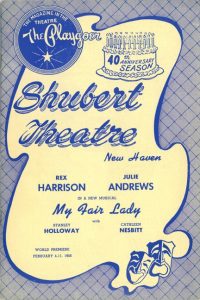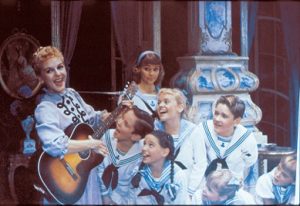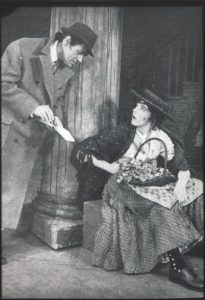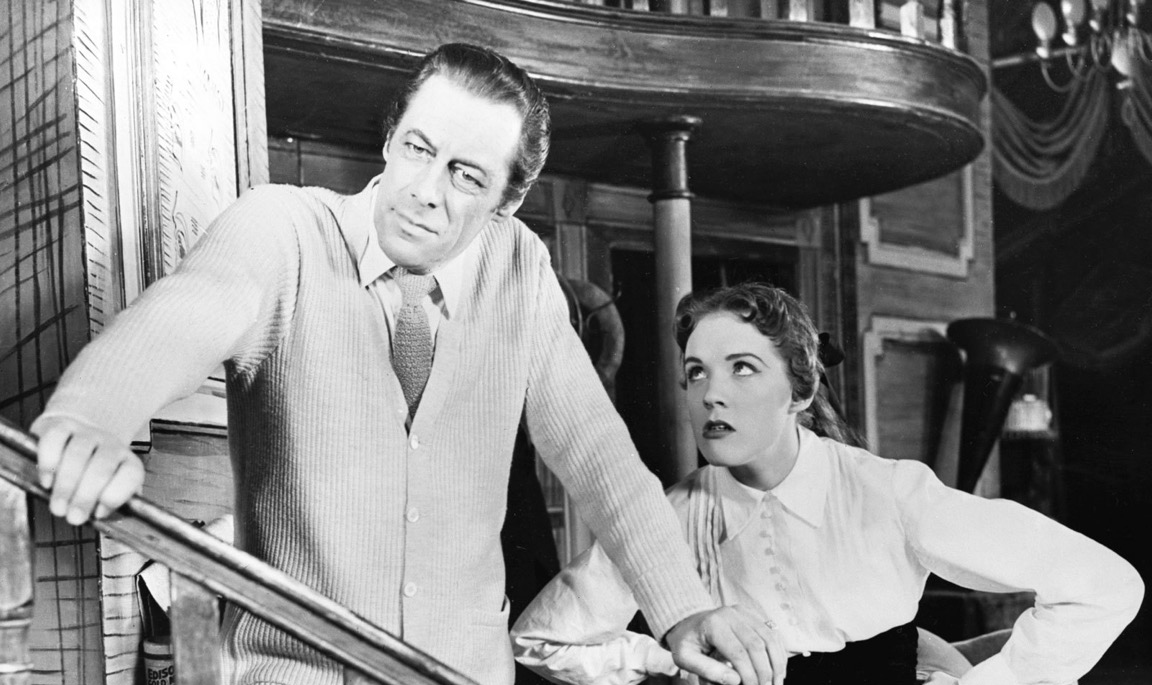 It was a landmark in the entertainment world: a theater where stars were born, the go-to spot for tryouts bound for Broadway, the home to all of Rogers and Hammerstein’s world premieres.
It was a landmark in the entertainment world: a theater where stars were born, the go-to spot for tryouts bound for Broadway, the home to all of Rogers and Hammerstein’s world premieres.
Even its marquee, proclaiming “The Shubert,” played a cameo in the 1950 movie “All About Eve,” starring Bette Davis. The context, like in so many other films about the theatre world of that period, made reference to “going to New Haven.” In those days, that meant the cast and crew were traveling to the Shubert to test whether their show was ready for the bright lights of New York.
“That’s what this New Haven landmark was known for,” Anthony Lupinacci, the theater’s spokesman, says of the venue that opened in 1914.
Close enough to New York, the Sam S. Shubert Theatre, named by brothers Lee and J.J. Shubert in memory of their brother, regularly was the first stop for plays opening as a shakedown run, usually moving on to Boston or Philadelphia before landing on Broadway.
But nothing is constant. By the mid-1970s, New Haven faced many of the undercurrents then plaguing many dying industrial cities in the Northeast. College Street, where the Shubert stands, was all but deserted. Buildings were boarded up. Unless you were teaching or studying at Yale, who wanted to go to New Haven?
Indeed, the once grand theater was almost demolished after the unthinkable occurred in 1976: it closed. Was it any surprise?
And then, like a dramatic turnaround from the depths, came Act 2. Civic-minded residents, business leaders, and city officials joined forces, insisting they had to save the beloved Shubert. Without it, they reasoned, how would New Haven lure theater lovers back to catch a show, dine out, maybe even shop in what was once known as a wonderful commercial center?
The revival didn’t occur overnight. It took seven years to plan the restoration, paying close attention to its original interior colors, identify funding sources and creating a strategy that would solidify its health into the 21st century.
The long-standing Adams Hotel adjacent to the Shubert was demolished. In its place an expansive new theater lobby and plaza were created. A future renovation now calls for enclosing more of the outdoor space – a smart move, says Lupinacci, since so much of the theater’s season runs through the colder months of winter and early spring.
When the theater reopened in December 1983, it was rebranded the Shubert Center for the Performing Arts. In 2001, the city selected a not-for-profit theater management company called CAPA (the Connecticut Association for the Performing Arts) with a local board of directors to run the theater. But we’re getting ahead of ourselves.
To appreciate the revival, you need to look back at its history. When it opened in 1914, tickets sold from 25 cents to $1.50.
Over the Shubert’s first 100 years, it showcased 14 Shakespeare productions, none more famous that a 1923 production of “Hamlet” starting John Barrymore. Theater historians called it the most famous of the 20th century, calling Barrymore’s portrait “the greatest living American tragedian.”

Comedy, revues and vaudeville also entertained theatergoers, including the Marx Brothers, who used the Shubert to fine-tune their routines before turning them into movies. Their classic 1930 comedy, “Animal Crackers,” for example, started on the Shubert stage a year earlier.
The theater also revived careers, like Katharine Hepburn’s, which was slumping when in 1939 playwright Philip Barry wrote a comedy called “The Philadelphia Story,” which she starred in on the New Haven stage to rave reviews and leading to her Hollywood comeback.
Two years later spelled the end of the Shubert brothers’ ownership of the New Haven theater when they were forced to divest several of their properties to break their monopoly in the entertainment industry. The theater was sold to a corporation headed by Maurice Bailey who ran it until it closed in the 1970s.
Despite the ownership change, the theater’s legacy continued.
In 1943, composer Richard Rodgers and lyricist Oscar Hammerstein, who would grow into one of the legendary musical theater writing teams ever, got together for the first time at the Shubert to put on a show about cowboys, an unlikely subject. It was wartime, says Lupinacci, and the nation was looking for something uplifting and escapist. The musical was called “Away We Go!” But when the show moved on to Boston’s Colonial Theatre before Broadway, the creators realized no one would ever remember that name. Instead, they had a hunch: A hit song from the play might be a better name and so they renamed it, retaining the exclamation point from the original title, calling it “Oklahoma!”

More than a decade later, another great team of Alan Jay Lerner and Frederick Lowe brought the world premiere of “My Fair Lady” to the Shubert, starring a young actress and singer named Julie Andrews. She played opposite Rex Harrison, a classically trained actor. But hours before opening night in 1956, as a snowstorm raged through the region, Harrison told his publicist he wasn’t going on, so petrified was he, according to several accounts, including Bailey’s secretary Edith Goodmaster.
Harrison’s publicist went to Bailey.
“Rex won’t do the show,” he said.
In that case, said Bailey, he’d have to send a press release to the New Haven Register, the dominant local newspaper, which ran multiple editions through the day. It was, after all, the only way in a pre-internet era to get the word out to ticket holders in Connecticut and those planning on coming in from New York.
Harrison’s publicist knew what that meant, and he went back to the actor, imagining the headlines, “Rex Harrison Refuses to Go On,” and told him bluntly, “If you don’t go on, you’ll never work again. Your career will be finished.” They talked and the publicist returned to Bailey and said, “OK, he’ll do it.”
Over the years, the hits kept coming to the Shubert. Other Rodgers and Hammerstein shows premiered on the stage including “Carousel,” “South Pacific,” “The King and I,” and “The Sound of Music.”
Dramas included Tennessee William’s premiere of “A Streetcar Named Desire,” where Marlon Brando was introduced to the world. Other future stars who got their start at the Shubert include Humphrey Bogart, Spencer Tracy, Jimmy Stewart, Clark Gable and Gene Kelly. Mary Martin, Paul Newman, Jason Robards Jr., Robert Redford, Warren Beatty, Shirley MacLaine, Andy Griffith, Jane Fonda, Sidney Poitier, James Earl Jones, Liza Minnelli, Ken Howard and John Travolta are others who have graced the Shubert stage.
The theater also has played host to ballet, opera, classical and popular music too with big names like Katherine Dunham, Jerome Robbins, Ted Shawn, Martha Graham, Beverly Sills, Louis Armstrong, Duke Ellington and more.
Since it reopened in December, 1983, after a $7 million renovation, the 1,600-seat theater’s mission has slightly changed from a place where shows try out to a place where touring shows get ready to go on the road, fine-tuning the technical aspects, and using a space for rehearsals that is far more affordable than working in New York.
Since then, big Broadway shows starting their national or world tours that have launched from the Shubert include “Cats,” “Annie,” “Les Misérables,” “A Chorus Line,” “The Color Purple,” and “Jersey Boys,” helping to bring people streaming back to New Haven.
Compared to many newer performing arts centers across the country, the Shubert stands about half the size of many theaters. In some cases, it’s a third the size.
But that’s part of its allure, says Lupinacci. “When the curtain goes up, actors say they’re not expecting to see faces, to have such close eye contact with audience. They love feeding off that intimacy.”
Photography courtesy of the Shubert New Haven archives







More Stories
Haunted Apples and Bewitched Beer
Gayle King speaks to Dennis House
Everybody Remembers Their First Outdoor Concert